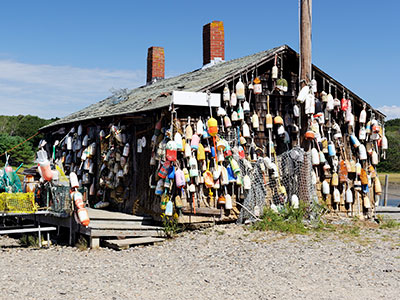
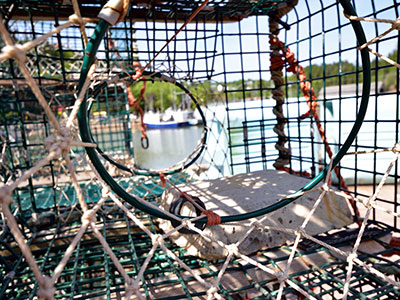
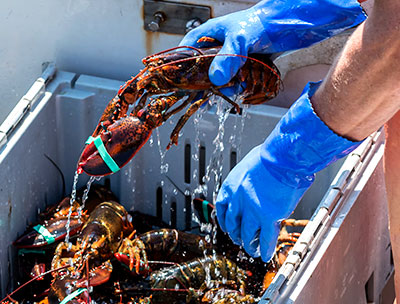
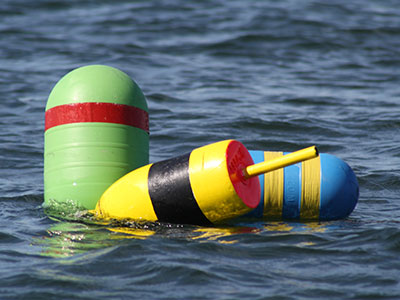
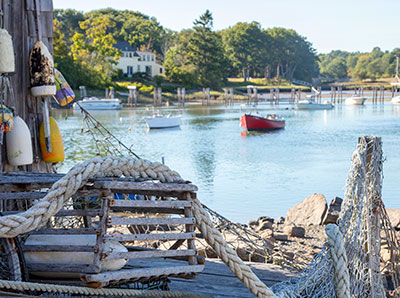
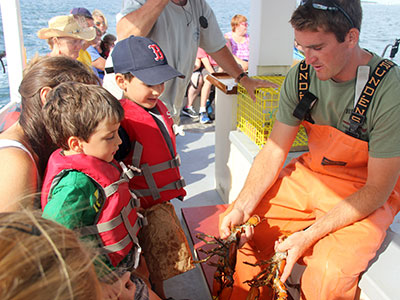

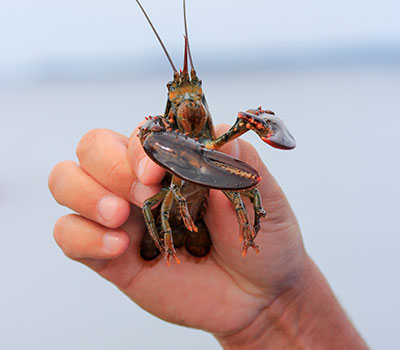
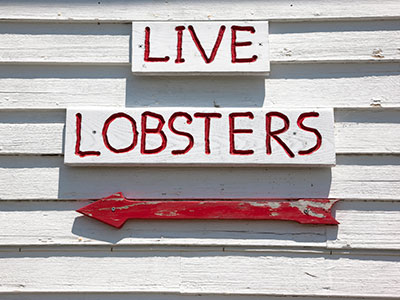
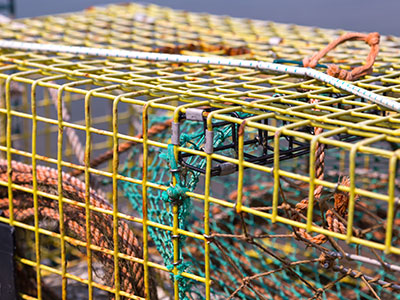
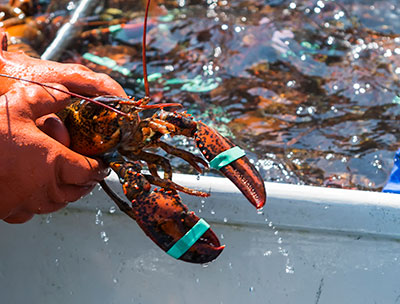
The History of Lobstering in Maine
OVER $1 BILLION SOLD
Over the last 14 years, the economic impact of all lobster related (not including restaurant sales) has grown each year and now contributes over $1 Billion to the Maine economy yearly. This massive number (split 75/25%) comes from the 6,000 lobstermen (a number that has only grown by 1/3 in over a century) and the 4,000 jobs in logistics, marketing, finance, and engineering held by Maine people.
According to a 2020 Mainebiz article: The year 1990 saw the start of a near-steady 30+ year increase in landings. In 2019, over 5,800 licensed harvesters landed over 100 million pounds, marking the ninth year in a row, and only the ninth ever where landings topped 100 million pounds. Although pounds landed declined 17% compared to 2018, the value topped $485 million, ranking 2019 as the fourth most lucrative for the fishery on the strength of a 20% increase in per-pound value.
Not to be outdone, 2021 was no different. According to the Maine Department of Marine Resources, "2021 was the most valuable year in the history of Maine's lobster fishery." At nearly $725 Million, the landed value for the Maine lobster fishery jumped by a phenomenal 75% over 2020, making it the single most significant increase in value, year over year. Readers should note that the price per pound for lobsters also increased in 2020 by $2.50 per pound. James Rosier had no idea how prescient his 1605 record of lobsters on the Maine coast would be.
These words, penned by John Rosier—explorer, chronicler, sailor, and fisherman—while traveling on the 1605 coastal exploration of Maine with British Captain George Waymouth—are the first known written record of a Maine lobster catch. They may also have been the first economic forecast for what would become one of the world’s longest-lived, most well-known, and most productive lobster fisheries. Today, those prophetic words ring true in what is now the state’s billion-dollar-a-year lobster industry. During the past 150 years, the humble lobster has proven a lead actor in the story of Maine. Despite their popularity, lobsters are quirky creatures. Their anatomy is rife with mysteries and live an independent existence, preferring a dark huddle among seabed rocks over a day at the beach. All of this aside, the Maine lobster has become an unmistakable (and unmistakably delicious) icon.
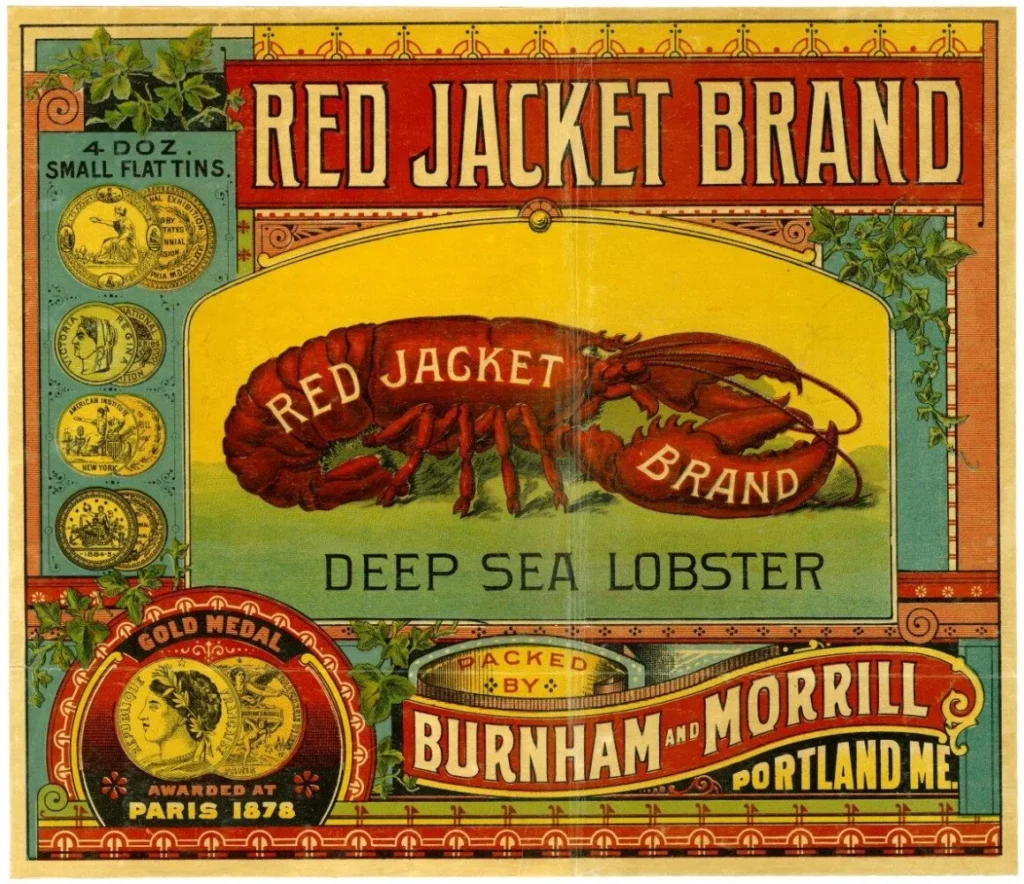
A star was boiled!
The path to icon status was not easy for the lobster. Native Americans along the New England Coast had only two uses for the piles of lobsters that were sometimes swept into the shallow waters along Maine’s rocky shores: food and fertilizer. This was likely because as experience had told them, a deceased lobster begins to decompose almost as soon as it dies. So a pile of soon-to-be odiferous lobsters sitting in the summertime sun left our forebears the option of hosting a massive lobster feast of making fertilizer. And so it was that until logistics and processing caught up with demand, lobster remained a local delicacy for the 150 years following Rosier’s historical catch.
A Star Was Boiled!
The path to icon status was not easy for the lobster. Native Americans along the New England Coast had only two uses for the piles of lobsters that were sometimes swept into the shallow waters along Maine's rocky shores: food and fertilizer. This was likely because as experience had told them, a deceased lobster begins to decompose almost as soon as it dies. So a pile of soon-to-be odiferous lobsters sitting in the summertime sun left our forebears the option of hosting a massive lobster feast of making fertilizer. And so it was that until logistics and processing caught up with demand, lobster remained a local delicacy for the 150 years following Rosier's historical catch.
In fact, inefficient preservation methods had always gotten in the way of allowing these spiny crustaceans to make it to dinner plates outside of New England (but that may have been its secret weapon in the long run). Under pressure from changing culinary trends, the fortunes of Maine lobster changed when in 1843, Mr. U. S. Treat opened Maine's first lobster cannery in Eastport. Learning canning techniques from a Scottish cannery, Treat was soon shipping and sharing Maine lobster with the rest of the world.
At 5 cents for a 1 lb. can in 1843—that would be just shy of $2.00 today—tinned lobster was a hit. Everyone from soldiers in the Union Army to members of America's nascent middle class was able to eat what Mainers had been dining on for centuries. Fueled by the meteoric growth of lobster canneries, Maine lobster was soon finding its way to the dinner table across the United States and Europe. Within a decade, city folk, known to many Mainers as "rusticators," began traveling to Maine during the summer seeking respite from the hot, hectic, and truly filthy eastern cities. Maybe it was for the lobsters, maybe not? But, when they returned home, the reputation of this delicacy began to spread.
POUND FOR POUND, HOW Lobstering changed FOREVER.
Well-smacks, an early lobster boat with a storage area below the waterline suitable for keeping lobsters during transit to Boston, had been in use since the 1840s. This shipping method allowed Maine lobsters to arrive alive and ready for sale to hungry customers in Boston and New York. But it was not until 1875, and with the wisdom (and moxie) that only a lobsterman possesses, when Maine’s first lobster pound was built.
By 1885, the Maine coast was home to eight other lobster pounds of similar scope. At the same time, under harsh criticism and concerns about overfishing, several fishery conservation efforts came into effect to protect the industry. These conservation laws and changing food trends led to the closure of the last Maine lobster cannery in 1895. Many now believe it was those early conservation practices that fostered a lasting culture of self-policing and sustainability; practices which allowed the Maine lobster industry to become a profitable model of sustainability. Without knowing it, these original lobstermen and entrepreneurs laid the groundwork for elevating the dark-hued spiny-shelled lobster to icon status while forever binding it with Maine’s cultural identity.
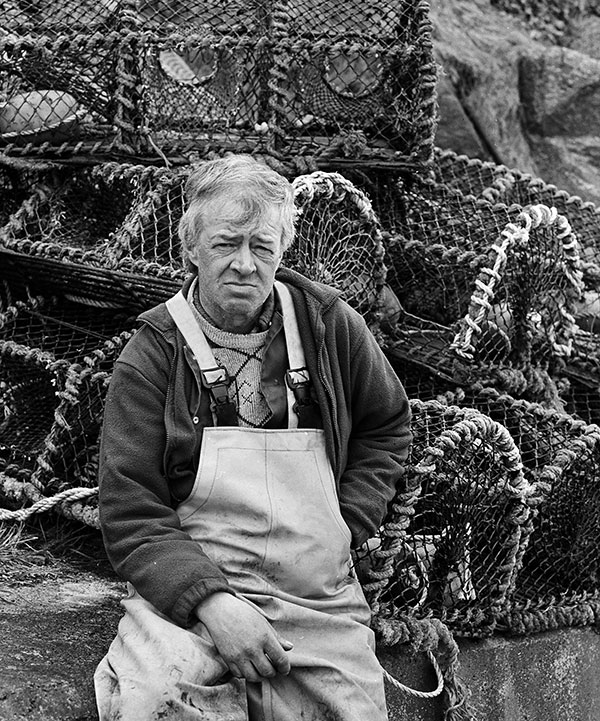
Lobsters of Another Color
Scroll over the images below to learn about the rare color varieties of Homarus Americanus that get pulled out of the cold North Atlantic waters of the Maine coast.
Blue
Odds of Capture: 1:2,000,000
Live Red
Odds of Capture: 1:10,000,000
Yellow
Odds of Capture: 1:30,000,000
Orange
Odds of Capture: 1:30,000,000
Calico
Odds of Capture: 1:30,000,000
Split-Color
Odds of Capture: 1:50,000,000
Cotton Candy
Odds of Capture: 1:100,000,000
Albino
Odds of Capture: 1:100,000,000
OVER $1 Billion Sold.
Over the last 14 years, the economic impact of all lobster related (not including restaurant sales) has grown each year and now contributes over $1 Billion to the Maine economy yearly. This massive number (split 75/25%) comes from the 6,000 lobstermen (a number that has only grown by 1/3 in over a century) and the 4,000 jobs in logistics, marketing, finance, and engineering held by Maine people.An Iconic American Experience
A recently conducted informal study (around the author’s office) resulted in a list of just three other US states with a cultural identity so bound together with an animal as Maine’s is to the lobster (sorry, moose). These include Texas and the longhorn steer, Wisconsin and the American badger, and Florida and the American alligator. While we have shown that the “Maine” moniker is hard to separate from lobster, it happens. Each year, hundreds of tons of Gulf of Maine lobsters are air freighted to China. Alas, those Maine caught lobsters have come to be known as “Boston lobster” likely for the simple reason that they they arrive in containers clearly labeled with the name of the shipment’s city of origin. Go figure.AN Iconic American Experience
A recently conducted informal study (around the author's office) resulted in a list of just three other US states with a cultural identity so bound together with an animal as Maine's is to the lobster (sorry, moose). These include Texas and the longhorn steer, Wisconsin and the American badger, and Florida and the American alligator. While we have shown that the "Maine" moniker is hard to separate from lobster, it happens. Each year, hundreds of tons of Gulf of Maine lobsters are air freighted to China. Alas, those Maine caught lobsters have come to be known as "Boston lobster" likely for the simple reason that they they arrive in containers clearly labeled with the name of the shipment's city of origin. Go figure.
Since the advent of the great American car trip, Maine tourists have routinely taken long coastal drives, for the spectacular views, dined al fresco on lobsters, and made the requisite visit to our souvenir shops. What red-blooded American who has visited the coast of Maine doesn't own at least one mug, keychain, shirt, or bottle opener with a lobster and the word "Maine" on it? Our cheerful lobster has managed to take dominion over a delightful and breezy spot in the brain of almost every American alive. And while that could be a bit of an overstatement, who would ever want to evict a tenant like that?
As paired icons go, the "bromance" of Maine & lobster offer the whole package. Most important by many accounts is the lobster's inspiring and genuinely American backstory; one of the hard-working independent Maine lobsterman, the pre-dawn chugging of a lobster boat, and the idea that anyone with a good work ethic can make it as a Maine lobsterman.
Let's Learn How to Order a Maine Lobster
Freshly caught lobster is about as classic a Maine summertime meal as it gets. Some like a lobster feed at their campsite or on their deck after a day out exploring with friends. A great way to do that is to stop at the lobster pound and have them steam them up for you. Die-hard Maine lobster fans will buy them live and boil them up themselves.
The only better thing is having someone do the hard part for you at a restaurant. If you don’t want to look like a tourist when you place your order, we have some helpful tips that will have you order lobster like a pro in no time.
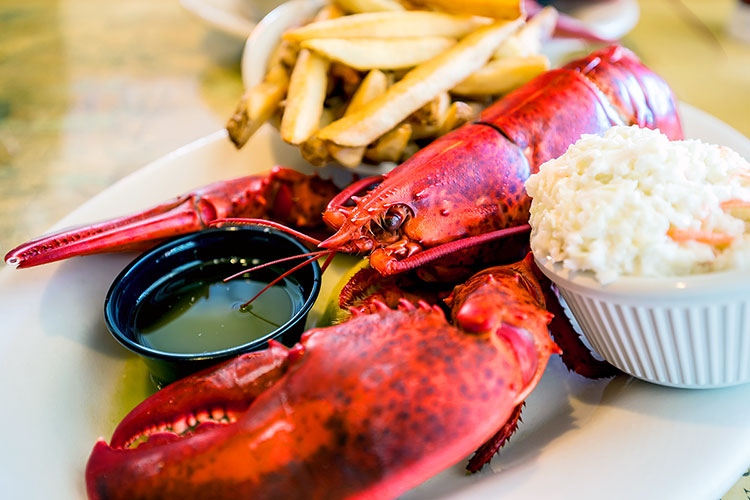
Shore Dinner
The classic order! A shore dinner comes complete with a 1 1/4 to 1 1/2 pound lobster, some corn on the cob, a small bag of steamer clams (small soft-shelled clams), and some new potatoes, salty, crispy fries, or chips. On the side, you'll find some drawn butter, crackers and picks to get the meat out, and a jaunty plastic lobstah bib.
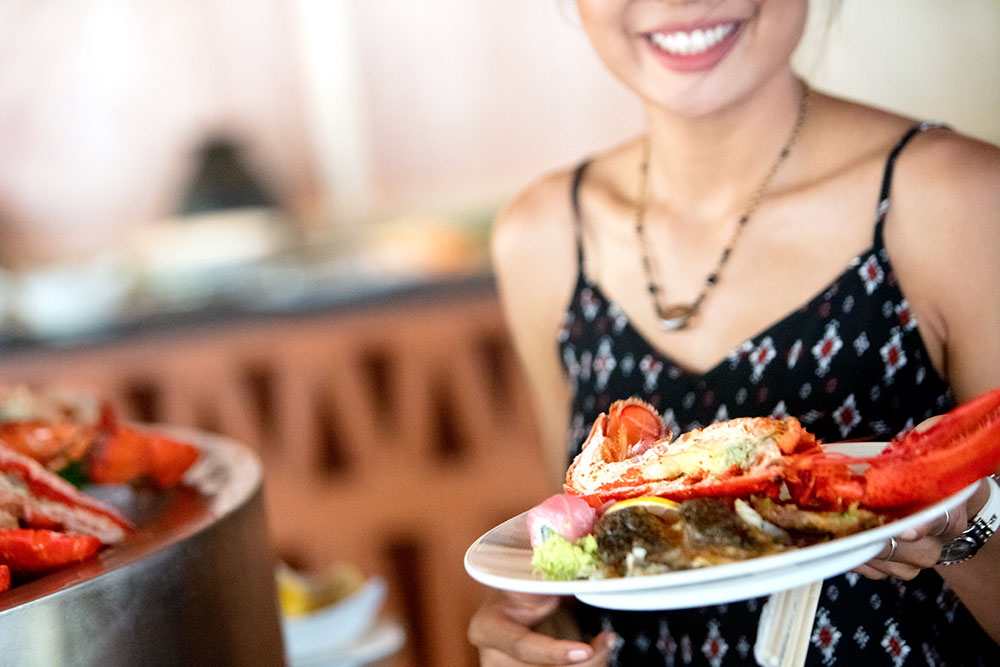
Lazy Man's Lobster
It's in the name. This choice is all the salty-sweet goodness of a Shore Dinner with a fraction of the work. First, the staff cooks the lobster (typically in a large steamer contraption), then they do all the hard work of cracking the claws, knuckles, and tail—leaving the meat in place. Finally, the whole thing is served up with sides, butter, and usually no bib.
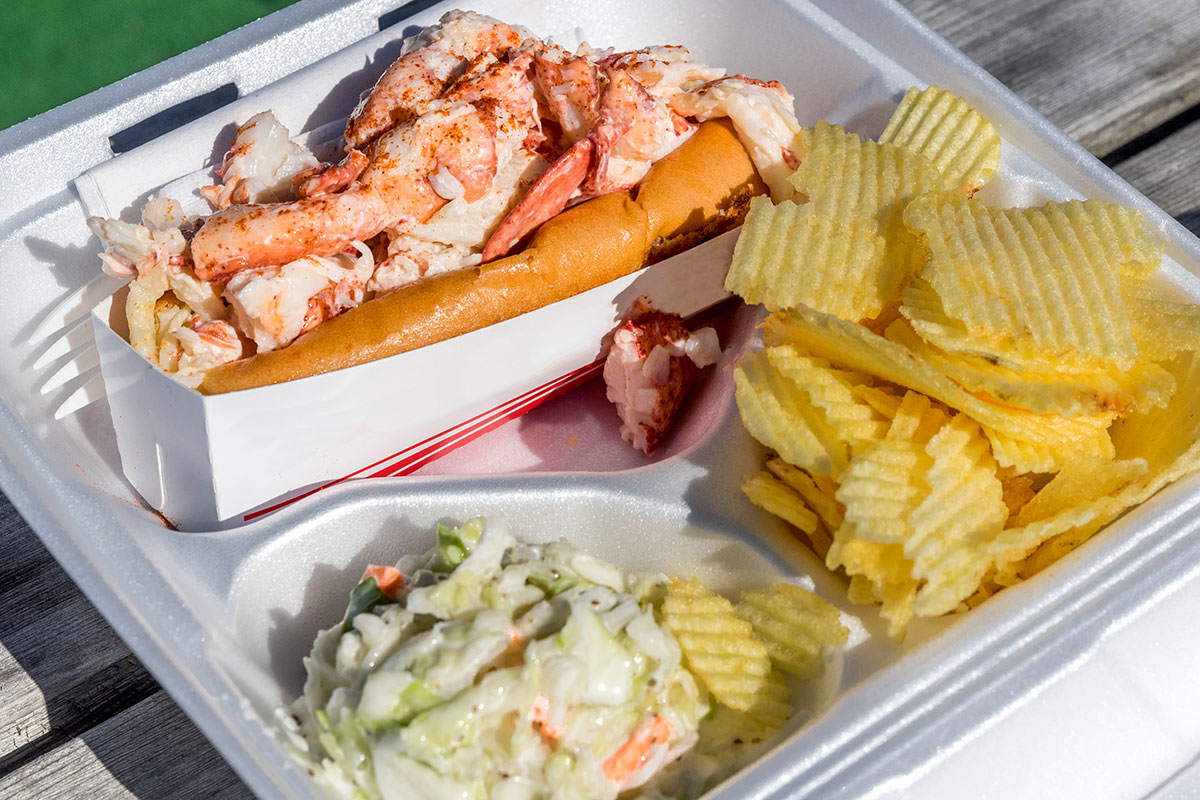
Lobster Roll
Fan-favorite. Take a top-loader bun, which looks a little like a slice of white bread molded into a bun shape, then toast it up and fill it with cooked chunks of the lobster's claw, knuckle, and tail meat. Those are the fundamentals. The tricky part can be figuring out whether you want it hot vs. cold. A hot lobster roll is a symphony of drawn butter, salt and pepper, and lobster. On the other hand, it's mayonnaise, a little seasoning, and loads of fresh lobster meat that make up a cold lobster roll.
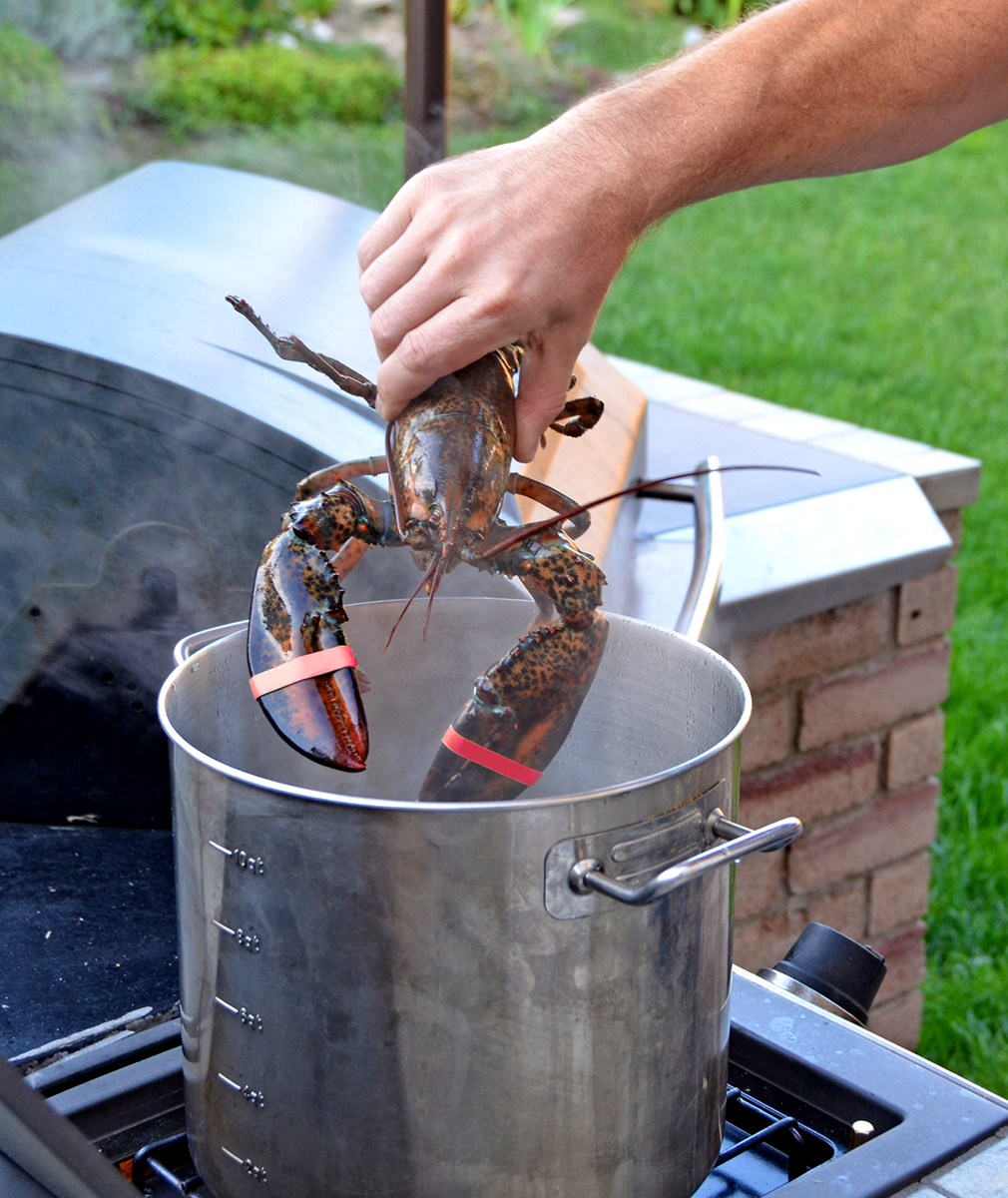
Get Cooking
Boil them, steam them. But, whatever you do, please don’t drown them.
Ok, it may seem a touch dramatic. But whether it’s storing lobsters to eat later or when you are ready to cook them go with a light hand on the H2O. Bringing home lobsters from the pound can be a thrilling affair. Make sure to look in the bag before you stick in your hand as those tight rubber bands on their claws can sometimes come loose—the author speaks from experience. Once they are out of the bag (most likely into the kitchen sink), resist the urge to give them a “bath” to keep them happy. It’s the best way to send them to a quick and watery grave as they lack the physiology to survive in fresh water.
All you will need is two to three inches of well-salted water (or, even better use seawater) in the bottom of a broad and sturdy pot. Anything more, and you’ll be serving a waterlogged lobster. Do it like the pros at the pound and bring that salty water to a rolling boil, drop the critters in the steamy bath and cover them up. No, a rattling lid isn’t a lobster trying to escape. In about 10 to 12 minutes, your lobsters will be ready to come out, all red, steamy, and cooked to perfection.
Eat a Lobster Like a Pro
Hover over each number below to reveal some tips and tricks for eating a whole boiled lobster like a Mainer. Plus a few thoughts on what to order along side it for the full dining experience.
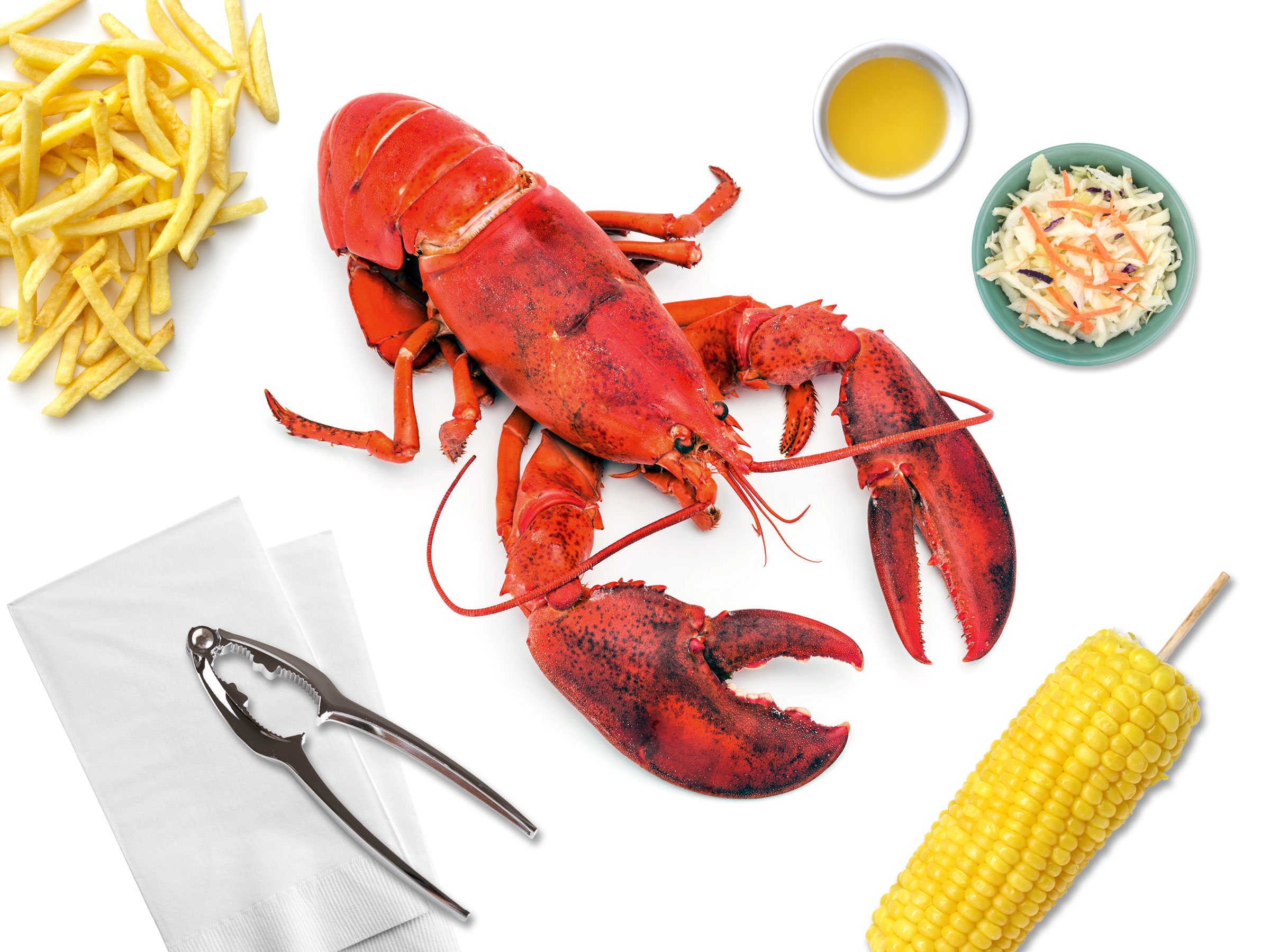
Claws First:
– Twist the claws off of the freshly cooked lobster.
– Pull each claw down and away from the body to remove it at the base of each claw.
– Separate the claw from the knuckle.
– Use a cracker (the v-shaped tool) to break the claw and knuckle open.
– Remove the meat with fingers, fork, or pick.
– Dip in melted butter (optional) and eat.
1 of 6 2Move on to the Tail:
–Separate the tail from the body by bending it up and away from the body in a twisting motion.
– Remove the tail fins from the end.
– Crack the tail in half (the long way) by pushing down on it on a firm surface or slice it open with a sharp knife down the center.
– Then, using a fork, remove the meat from the tail in one piece.
2 of 6 3Explore the Body:
– Pluck off the little legs and save them for the last step.
– Remove the shell from the back of the body (carapace). Pick out any pieces of white meat that you can find. There is a lot more there than you may think.
– To get to the meat in the cracks and crevices, you may have to move some orange or green stuff out of the way. If you find an orange mass inside the body, those are lobster roe (eggs); the mushy green matter is called the tomalley. Not everyone likes how the roe and tomalley taste; others consider them delicacies.
3 of 6 4The Last Morsels:
– Finally, if you aren’t stuffed, try the walking legs—those are the four small ones on each side.
– It is easy to simply suck the meat out of the legs or use a pick to work out the meat from the legs.
– If you want to show off a bit, use a bottle or rolling pin to push out the meat like a pro.
4 of 6 5Tools
– Used to crack open hard-shelled lobsters it is formed to the shape of the lobster claw and legs in order to easily grasp the hard-surfaced area.
– Be sure you have a lot of napkins or paper towels handy.
5 of 6 6
Sides
– Butter and lobster are like Oreos and milk; they are yummy and go perfectly together.
– Coleslaw is a classic lobster side dish. It’s crunchy, light, slightly sweet, and tangy.
– Corn on the cob often boiled alongside the lobster, is also great with butter. Bonus: during late July and August, it is often fresh from a nearby farm.
– French Fries, crispy and salty, are always on the menu when you are at a seafood restaurant. Some offer options, such as onion rings, dinner rolls, cheesy biscuits, or homemade potato salad.
6 of 6